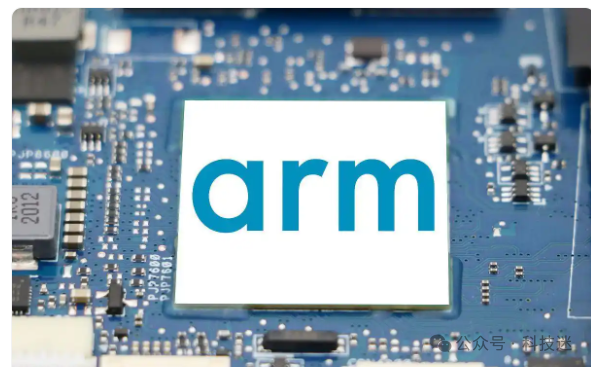This morning, ARM’s announcement was tightly guarded, but everyone has guessed the gist of it, knowing that it aims to provide a new direction for the industry. To put it bluntly, ARM is currently facing tough times, encountering setbacks in the market, much like experiencing failures in both career and relationships. Last year, NVIDIA attempted to acquire it, but the deal was rejected, causing quite a stir, leaving ARM without any benefits and damaging its reputation.
ARM was not always in this position; it once thrived in the chip industry, akin to McDonald’s in the fast-food sector. Many chip manufacturers lined up to collaborate with it, paying licensing fees to access ARM’s public architecture, allowing them to create their own chips using these ready-made designs, which was both convenient and ensured performance. Back then, ARM could simply rely on licensing fees to enjoy a prosperous existence.

However, the industry is always changing, and Qualcomm was the first to “stir things up.” Qualcomm no longer wanted to rely on ARM’s public architecture, akin to not wanting to always eat someone else’s cooking; it wanted to cook its own meals. It acquired a company capable of developing its own architecture and quietly developed the Snapdragon 8 Gen 1. Once this chip was launched, its performance was outstanding, quickly becoming a representative of high-end chips. This made ARM uneasy, leading to disputes over licensing fees and architecture usage, with both parties engaged in a tug-of-war, neither willing to back down. Ultimately, Qualcomm emerged victorious, gaining more influence, and now its relationship with ARM is maintained solely through the instruction set.
MediaTek, appearing compliant, actually has its own plans. While publicly claiming a good relationship with ARM, it turned around and developed its own cores for the 9400 processor. This isn’t MediaTek’s fault; ARM’s previous licensing rules were too domineering, akin to requiring restaurants to use a specified recipe without altering any ingredients. However, chip manufacturers want to create distinctive products, and no one is willing to be restricted. Everyone began to ponder their unique technologies, leaving ARM with no choice but to relax its policies, introducing new instruction set usage rules, informing everyone that they could modify designs as needed.
Due to these developments, ARM’s situation has become increasingly precarious. Major clients have been leaving one after another; Qualcomm is going solo, MediaTek is secretly developing, Huawei has also turned to self-development after facing restrictions, and Apple has always operated independently, maintaining limited cooperation with ARM. ARM calculated that if this continued, it would have no business left. To turn the tide, it introduced a new collaboration model, previously offering only basic licensing, now providing not only public architecture but also allowing manufacturers to customize modifications based on their needs, akin to shifting from selling bare houses to offering semi-furnished homes while letting buyers do the decorating. MediaTek also seized the opportunity to open its baseband technology to other manufacturers, taking on a new role in the industry.
Currently, ARM’s identity is somewhat ambiguous; if you say it is a chip manufacturer, it resembles a broker connecting chip manufacturers, like a real estate agent; if you say it is a technology vendor, it seems to be teaching others how to make chips, like a tutoring teacher. However, its current solution has a notable drawback: the baseband can only be used externally, which is not very convenient. For major manufacturers like Qualcomm and MediaTek, this solution is not very attractive, but for new companies entering the chip industry, having a performance-guaranteed public design is certainly better than starting from scratch.
Whether ARM’s changes can lead it back to its peak remains uncertain, but it is certain that competition in the chip industry will become increasingly fierce. Every manufacturer is seeking new avenues, and what new stories will unfold in the future remains to be seen.